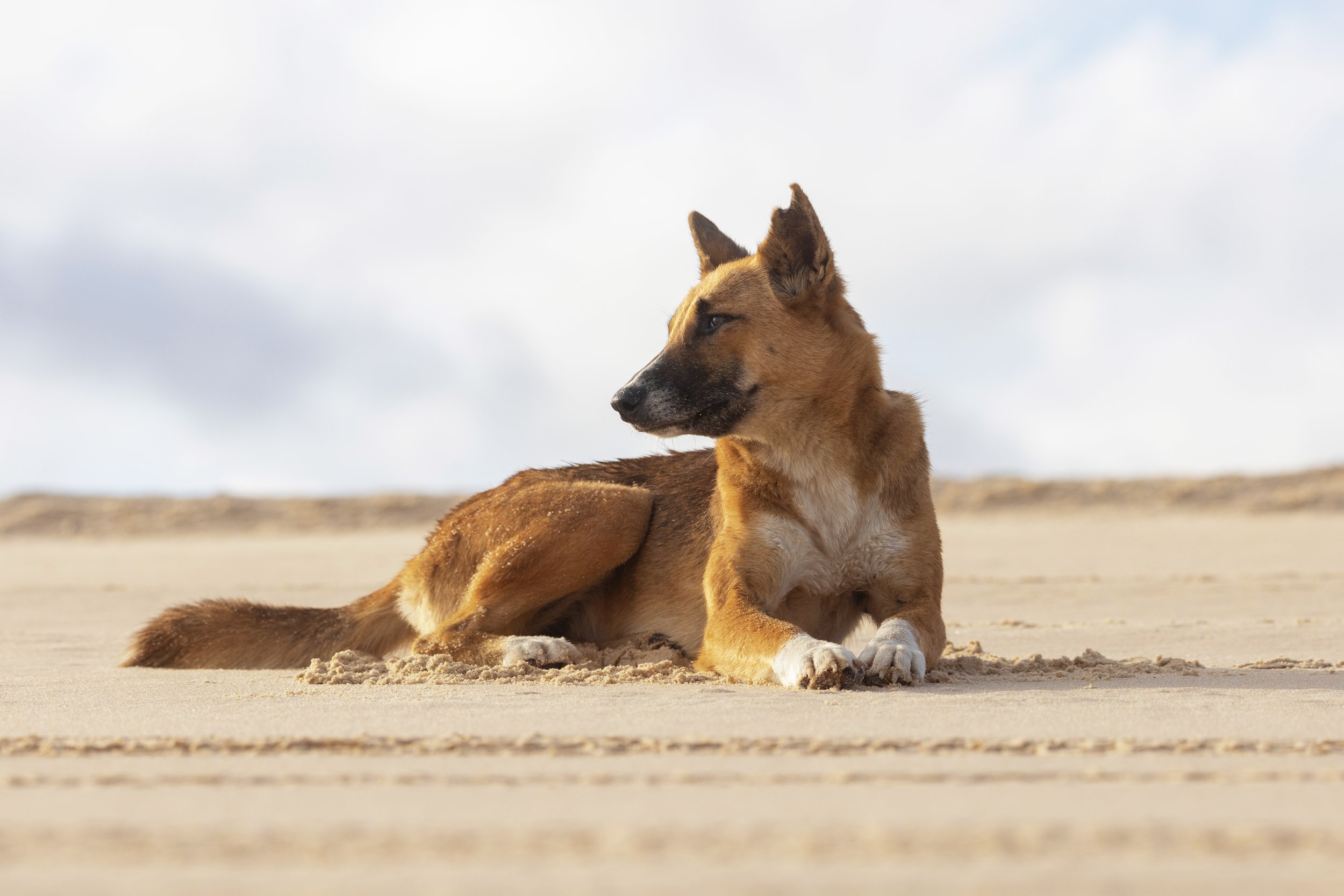Dingo Myths Debunked
No australian animal is shrouded in more mystery and misinformation than the dingo. Dingoes are vilified and persecuted around all of Australia on a scale that is beyond comprehension and a lot of this is because of a lack of understanding and long held misconceptions about them. In this video, we will look at some of the most common myths surrounding dingoes and uncovering the truth behind these vital animals.
Myth #1 - Dingoes are just stray dogs.
Many people think dingoes are simply feral dogs that have gone wild. But this could not be further from the truth. In fact, Dingoes are a distinct species of wild canid, genetically different from domestic dogs. They have been in Australia for thousands of years and evolved to fit their environment, adapting unique behaviors and physical traits that allow them to thrive in this harsh landscape. The truth is, dogs simply do not have the skills and adaptations to survive in such harsh conditions and the few dogs that do get free and go out bush do not survive long at all.
Myth #2 - Dingoes will destroy all wildlife if left unchecked.
Now I know this doesnt sound like it makes sense. If we are in the midst of the largest mammal extinction on earth, how can an animal that eats other mammals be a good thing? Dingoes play an important role in the ecosystem by controlling populations of herbivores and smaller predators, maintaining balance. They help reduce the overgrazing that can occur when herbivore numbers are not regulated.
Myth #3 - Dingoes are aggressive.
Dingoes are generally very shy and cautious around humans. People have this idea of dingoes being aggessive due to how they are portrayed in the media and campfire stories. In reality, dingoes are actually extremely shy animals and avoid people as best they can. And after being hunted for hundreds of years, I can see why. In all of the hours I have spent with dingoes, I have never experienced any sort of aggression in any way.
Myth #4 - Dingo culling is an effective way to protect livestock.
Culling has proven to be ineffective in the long term and causes significant harm to ecosystems by disrupting the natural balance. Lethal management of dingoes has been used since colonisation, yet we have seen time and time again that it is ineffective, expensive and has disasterous trickle down effects on the environment.
Myth #5 - Dingoes were responsible for the thylacine extinction.
This myth is a suprsingly popular one. But like all good campfire stories, its a load of shit. While dingoes would inevitably killed thylacines and had an impact on their population, humans are the cause of their extinction. When the first fleed colonised Australia in 1788 and brought sheep with them, the Thylacine now added a new item to their menu. This lead to a huge shooting, trapping, bounty and poisoning campaign that lead to the extinction of the thylacine. Which sounds kind of familiar but I can't really figure out why...
Myth #6 - All of the dingoes on Kgari are starving - that is why they attack people.
Every time a dingo attacks someone on Kgari, formerly Fraiser Island, all of the armchair biologists come out of the wood work to say "they are starving to death" or "look how skinny they are, we have to feed them". After scrolling through a sea of these comments left by people whos profile picture is a holden commodore, I think I have finally hit my limit so let me be clear; the dingoes on kgari are not starving.
Dingoes are naturally extremely lean animals and have very little body fat. Their ribs and hips are supposed to be visible! We are so desenistised to having overweight canines around us that when people see a healthy dingo, they assume they are starving.
The reality is, dingoes on Kgari have an abundance of food. This includes possums, lizards, birds, turtles, fish, rats, macropods and anything that washes up on the beach.
The reason that people get bitten on Kgari is because they have lost their fear of humans because people keep feeding them. It is as simple as that. So next time you're visiting Kgari, dont feed the fucking dingoes.
Myth #7 - Dingoes cant bark.
I don't really know where this myth stems from but it is just that; a myth. Dingoes are capable of a range of sounds that includes barking, howling and huffing. They howl to announce their location and find out where other dingoes are in the landscape, mostly at night to keep the pack together and to warn others to stay away. Packs often howl in a chorus, which may be more intimidating to other packs when they hear how many dingoes are in a nearby pack.
Myth #8 - "Pure dingoes" are all ginger.
This is another myth that your uncle from central Queensland who you only see at Christmas and funerals will tell you. Dingoes coats vary drastically! While the majority of dingoes are ginger with white on their feet and on the tips of their tails, this is not the case for every dingo. There are white dingoes, black dingoes, brindle dingoes and everything in between. A dingoes coat colour is in no way a representation of their genetic purity. A study, published in the Journal of Zoology, found that while 53 per cent of dingoes have a ginger coat colour, 9 per cent were sable, 11 per cent black and tan, 14 per cent brindle, 5 per cent black, 1 per cent white and 6 per cent were patchy.
These are just a few of the many myths that surrond dingoes and prevent us from appreacting them for the vital animal that we are so lucky to have in this country. But I put the question to you; what myths have you heard about dingoes?


